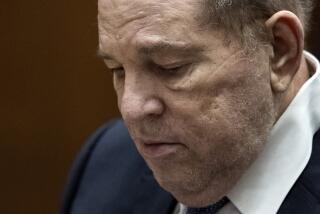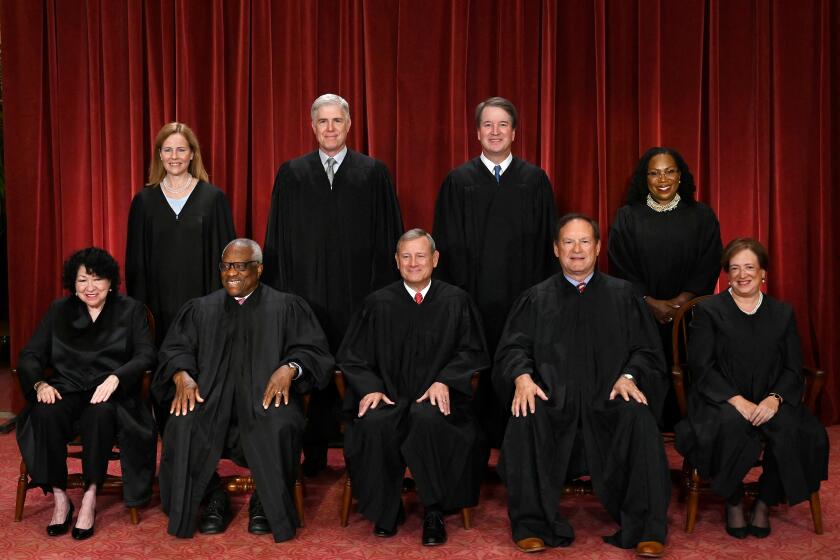State High Court Indicates Support for DNA Evidence
- Share via
SAN FRANCISCO — Hearing its first case on DNA evidence, the state Supreme Court made it clear this week that some results of genetic testing will be allowed in California courts, but seemed undecided about dramatic statistical claims that identify suspects with near-fingerprint certainty.
Justices questioned lawyers Tuesday in a Bakersfield rape case about which method of calculating the odds of a DNA match is generally accepted by scientists--one that finds the likelihood of an accidental match as one in several hundred, one in thousands or even one in billions.
Prosecutors pushed for a standard allowing the highest numbers. Deputy Atty. Gen. Jo Graves said a scientific consensus now supports FBI analyses that yield huge odds that a DNA sample at a crime scene can be linked to a particular person.
Justice Ming Chin, an advocate of restrictions on DNA statistical claims, pressed Graves on whether the actual consensus is in fact for the most conservative calculations that give the accused every benefit of the doubt and produce much lower odds.
That approach is rejected by scientists, Graves said.
When Chin posed the same question to defense lawyer Valerie Hriciga, she replied that “there is no statistical calculation that has yet been generally accepted.” She said grand claims of probabilities must be offset by evidence of the chances of a “false positive” caused by flaws in testing.
But she did not dispute Justice Kathryn Mickle Werdegar’s observation that the testing of DNA, the genetic material in human cells, is a generally accepted means of gathering evidence.
The court must decide whether any statistical method of analyzing DNA evidence has won scientific acceptance, and, if so, how it affects convictions in which other methods were used.
The ruling, due in 90 days, will affect more than a dozen cases before the high court, and many others in lower courts.
The defendant in the case under discussion Tuesday, Sergio Venegas, was convicted of committing rape, forcible oral copulation and other crimes against a woman in a Bakersfield motel room in November 1989, and sentenced to 65 years in prison.
The woman did not get a good look at her attacker, but the jury found Venegas guilty after less than two hours of deliberations, based largely on blood and semen stains at the scene. An FBI criminalist testified that DNA from the stains and from Venegas was common to only one in 65,000 people in the general population, and one in 30,000 among Southwestern Hispanics.
The defense disputed the testing procedures and produced its own expert, who calculated the likelihood of an accidental match as no lower than one in 378.
The convictions were overturned in 1995 by a state appeals court, which ruled that the FBI had failed to follow nationally accepted statistical methods, resulting in claims of accuracy that would not be supported by a scientific consensus.
More to Read
Get the L.A. Times Politics newsletter
Deeply reported insights into legislation, politics and policy from Sacramento, Washington and beyond. In your inbox twice per week.
You may occasionally receive promotional content from the Los Angeles Times.









